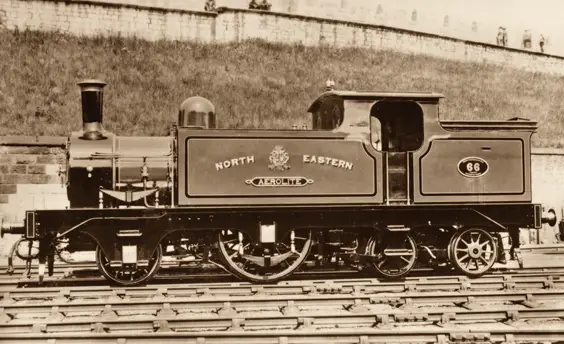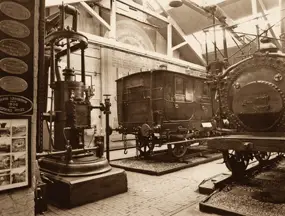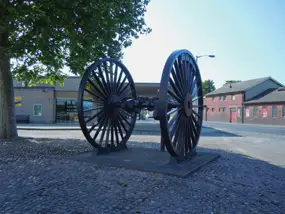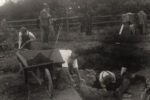The Story of the National Railway Museum, York
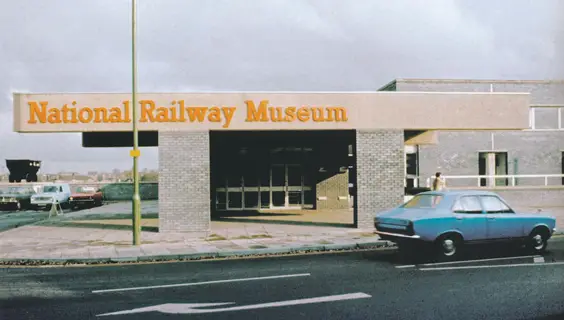
By Paul Chrystal
The history and origins of the National Railway Museum at York go back to the Railway Centenary Exhibition that was held in York in 1925, the success of which led to the opening of the first Railway Museum in 1927, in Queen Street.
The Science Museum in London – known then as the Patent Office Museum – tentatively started the country’s collection of railway locomotives by buying Rocket (in 1866), Puffing Billy, and Agenoria, the oldest locomotive in the world, in such pristine condition, and sister locomotive to Stourbridge Lion, exported to the USA in 1829 and the first locomotive to run on rails there.
The North Eastern Railway then opened the public Railway Museum in Queen Street, once a repair shop attached to the original Motive Power Department. It was chosen in preference to the old plumber’s shop behind the passenger station. Initially, the museum was somewhat exclusive – open only to invited guests and VIPs in the industry; January 1928 saw the doors open to the public. The first exhibit was a wooden ticket dating press.
Around the same time, a multitude of small exhibits was removed from the Headquarters of the London & North Eastern Railway and displayed in the first-class refreshment room in the old station. They remained there until 1966 when they were finally moved to Queen Street. During the Second World War, many of the large exhibits were dispersed to less vulnerable locations. A branch of British Transport Historical Records was set up at York in 1955 to facilitate railway related research. In 1958, an exhibition of royal coaches opened.
“Another salvo in the ongoing battle of the north-south divide”
By the 1930s, all the railway companies had ad hoc railway-related collections of relics with little effort going in to centralisation; these collections were only combined in 1948 after Nationalisation. Things, however, from 1961, were gravitating away from York towards the Transport Commission’s Museum of British Transport in a converted bus garage in Clapham. Their collection included the restored Mallard; 200,000 people per year visited the museum. Other railway museums existed at Swindon GWR Museum and at Glasgow Transport Museum.
The Beeching Report recommended that British Rail should wash its hands of museums, resulting in a campaign to create a new national museum. Under the terms of the 1968 Transport Act, a National Railway Museum was to be set up at York as a branch of the National Museum of Science and Industry, there being no room at South Kensington. It was to be the first English national museum outside London, established to house the expanding collection, then located in Clapham, and in the existing York Railway Museum at Queen Street. The Transport Act also usefully ordained that the museum had first claim on redundant items from British Rail without cost.
York’s National Railway Museum gives us another salvo in the ongoing battle of the north–south divide. Xenophobic southerners were incredulous that a national museum could be located outside London. They were led by Lord Montague of Beaulieu, who tabled a special debate in the House of Lords arguing that it was inconceivable that any visitor to the UK would want to go all that way to the provinces to visit a museum, not least one in York.
“90,000 petition in favour of York was influential”
The Times and, ironically, the Duke of Edinburgh, were on the side of Lord Montague. A petition was signed by 122 MPs desperate to keep the museum in London. Peterborough, Harrow and Crystal Palace were all in the race as possible venues. The flat-earth MPs, though, were outgunned by people power: a 90,000 petition in favour of York was influential, as was a visionary Jenny Lee, Labour MP.
York, of course, won the day. Conversion work started: Queen Street closed on New Year’s Eve, 1973; Clapham had closed in April that year. On 27 September 1975, the celebrated National Railway Museum was opened at Leeman Road in York by the once anti-Duke of Edinburgh himself. But not before divine retribution played a hand: British Rail laid on a High Speed Diesel Train (HSDT) – the prototype of the Intercity 125 – to get the duke to York. However, one of the power units caught fire at Welwyn Garden City, and, unbeknown to a sleeping national press, proceeded at a leisurely 105 mph, making him late for the ceremony.
The building from which it rose was the converted old York North engine shed, originally opened by the North Eastern Railway in 1878 and rebuilt in 1958, alongside the East Coast Main Line. It was known as the North Motive Power Depot and housed four locomotive turntables, the largest of which measures 21.5 m and is still delighting visitors when in action in the Great Hall. The date coincided with the 150th anniversary of the opening of the Stockton & Darlington Railway.
“Museum had 727,000 visitors in the 2014/15 financial year”
Around 500,000 people passed through the doors in the first two months of its opening with over 2 million in the first twelve months. Admission was free. The continuing scepticism of southern-based civil servants who spectacularly underestimated the appeal of a northern-based national museum resulted in a woefully inadequate cafeteria, but apart from that everything went extremely well.
The year 1979 saw the restoration of a train of vehicles to mark the centenary of on-train catering and an exhibition to mark the centenary of railway electric traction. Also in 1979, the museum commissioned a working replica of Stephenson’s Rocket for the Liverpool & Manchester Railway’s 150th anniversary in 1980.
The museum displays over 100 locomotives and 300 other items of rolling stock, most of which either ran on the railways of Great Britain or were built there. Also on the 20-acre site are many hundreds of thousands of other railway-related items of social, technical, artistic and historical interest. The museum had 727,000 visitors in the 2014/15 financial year. The largest railway museum in the world in terms of floor area is La Cité du Train in Mulhouse, France, although this attracts significantly fewer visitors than the National Railway Museum.
The York museum boasts a unique display of royal railway vehicles, or ‘palaces on wheels’, indeed the best of its kind in the world. This started when a member of staff at the London & North Western Railway works at Wolverton fortuitously salvaged the royal saloon there from destruction. It had been used by Queen Adelaide Amelia Louisa Theresa Caroline, sister of the Duke of Saxe-Meiningen and widow of King William IV before her death in 1849. From then on many of the royal saloons of subsequent monarchs and their families have been preserved and are now in York, in all their splendour.
“Won the European Museum of the Year award in 2001”
The 8-foot-10-inch-diameter railway wheels at the entrance to the museum are probably the largest locomotive wheels in existence; they were cast at Bristol in 1873 to drive 4-2-4 Tender Loco No. 40, an express passenger train of the Bristol & Exeter Railway. The wheels have been part of the National Railway Collection since 1964 and have been in their present location since 1975.
In 1994, the Institute of Railway Studies was launched as a joint venture between the National Railway Museum and York University. In 1999, The Works was opened, effectively expanding the museum to three times its original size. The museum won the European Museum of the Year award in 2001. In 2004, the Yorkshire Rail Academy, a purpose-built rail training centre and the base for the museum’s education team, was opened. It was a joint development between York College and the museum.
“One of the largest collections of railway-related material in the world”
The latest development is Search Engine, the £4 million archive and research centre that gives public access to previously unseen artwork, papers, reports, photographs and artefacts. Search Engine is one of the largest and richest collections of railway-related material in the world. It holds 1.75 or so million photographs covering the earliest days of photography to the present day. These include official collections from railway companies and collections from aficionados like Eric Treacy and H. Gordon Tidey.
On 23 September 2015, Virgin Trains East Coast and the National Railway Museum joined forces to celebrate four decades of the museum’s life. Locomotive No. 43238 was renamed National Railway Museum 40 Years 1975–2015 on the platform at York station.
The same locomotive was previously called National Railway Museum – The First Ten Years 1975–1985 for twelve years from 1985. It now bears a distinctive and specially designed livery, showing major exhibits from the museum’s collection, including the working replica of Stephenson’s Rocket and Locomotion No. 1 currently on loan to Darlington’s Head of Steam Railway Museum.
Extract taken from ‘York in the 1970s’ by Paul Chrystal, courtesy of Amberley Publishing, ISBN 9781445640662, price £14.99, available from Amberley Books.
Top image: National Railway Museum soon after its opening in 1975. A chaldron wagon can be seen on the left, on top of the Gaunless Bridge, the first iron railway bridge in the world.
